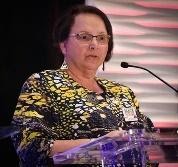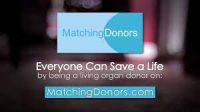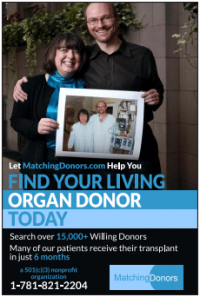 In an exclusive interview, the Director of San Diego’s VA Healthcare System shares insights and challenges
In an exclusive interview, the Director of San Diego’s VA Healthcare System shares insights and challenges
By Helen Horvath, Army veteran
June 11, 2020 (San Diego) – The COVID-19 pandemic has opened up a wide variety of complex systemic blind spots in our healthcare system, including care for military veterans. This has been the result of how the various private sector and government agencies initially responded to the pandemic.
 One of the greater challenges beyond finding toilet paper in the initial days of the stay at home order was to determine how to manage healthcare in our communities. Each hospital and community healthcare partner worked to comply with Governor Newsom’s initial closure of non-urgent healthcare services, while balancing patient needs. The healthcare system responses created economic and healthcare challenges for our regional, state, and national healthcare system.
One of the greater challenges beyond finding toilet paper in the initial days of the stay at home order was to determine how to manage healthcare in our communities. Each hospital and community healthcare partner worked to comply with Governor Newsom’s initial closure of non-urgent healthcare services, while balancing patient needs. The healthcare system responses created economic and healthcare challenges for our regional, state, and national healthcare system.
These initial closures provided our community with short-term relief to resolve the concern over becoming infected with COVID-19. Yet, the recurring problems tied to personal finances and the impact to our nation’s economy has created additional blind spots in the healthcare delivery services solutions.
One of the worst results of this type of community response occurs when leaders implement a strategy to solve a problem while ignoring the important healthcare systems dynamics. Often in government this band-aid effort becomes short-term relief, while the recurring problem returns, often worse than before.
According to San Diego City Council President Pro Tem Barbara Bry, “COVID-19 has exposed serious holes in our healthcare system, including healthcare for veterans. As part of our lessons-learned from the pandemic, we need to recognize all of our health and safety is compromised when segments of our population don’t have access to quality healthcare. We should be asking all levels of government to get serious about fixing those holes.”
The local, state and federal government’s response to the COVID-19 pandemic has created a unique set of challenges in navigating our community’s healthcare needs that are mirrored in the non-government healthcare systems. Each system is unique; yet, the overall need is still healthcare services provide effectively and efficiently.
For some veterans in our community, Veterans Administration Healthcare System (VAHS) is a benefit that takes the place of a typical healthcare plan. The VA healthcare benefit treats military service that is connected disabilities and overall healthcare needs.
According to the 2020 California Association of County Veterans Service Officer’s report, there are 240,925 potentially eligible veterans residing in the San Diego Region. Of these veterans, the VA San Diego Healthcare System provided services for 86,138 eligible veterans in 2019 with 10,568 veterans from East County accessing the VA healthcare system according to Ms. Cindy Butler, VAHS Public Affairs Officer (PAO). Eligibility is based upon military service and type of discharge.
On or about March 16, 2020 the VAHS regional leaders across the nation were sent instructions by the “central office” (VA Headquarters) requiring cancellation of all face to face appointments and surgeries that were not life threatening. Just as with all healthcare systems in our region, the impact of the COVID-19 pandemic was felt immediately by the veteran population changing the veteran’s healthcare delivery system immediately. The VAHS was thrown into uncertainty and chaos as veterans and the community began to learn the COVID-19 protocols required to obtain healthcare. With 86,138 potential patients, the healthcare system needed to change how healthcare was delivered to all eligible patients.
The VA shifted medical services to online appointments with medical providers or instructed patients to go to the contract urgent care clinics around San Diego if they were not experiencing COVID-19 symptoms. The VA mental health services prior to the pandemic, had been provided online and in person mental health services. The majority of mental health services shifted to online services. Throughout the pandemic, the process for obtaining care has shifted based upon who is contacted within the VAHS.
From March 2020 through publication of this article, the VA has not yet opened up services fully. According to Cindy Butler, VAHS PAO, the clinics are only operating at 15-20% of normal patient appointments and care. In speaking with a confidential contact at the VA, the operating room is only operating at 15% capacity, leaving many employees waiting to provide much needed non-emergency medical services and surgeries. According to the contact, the VA is only providing surgeries on a lifesaving basis (cancer, cardiac services, etc).
 ECM interview with Dr. Robert Smith, Director, VA San Diego Healthcare System
ECM interview with Dr. Robert Smith, Director, VA San Diego Healthcare System
On May 27, 2020 ECM interviewed Dr. Robert Smith, Director, VA San Diego Healthcare System. (Photo, left, via VA website). He discussed the current situation within the VA Healthcare System and the plans to increase services to the community to work towards returning to a pre-COVID-19 operational level.
ECM: What are the current standards within the VA to protect patients from COVID-19 when entering the facility?
Dr. Smith: “At the VA Medical Center, we have set up COVID-19 testing on an appointment and drive through system that does not require entry into the facility. We are actively screening symptoms…In order to enter the facility, patients must not have symptoms and have a valid medical appointment. At the entrance, the appointment is checked against the appointment list.” (Note: If an individual does not have an appointment or purpose to be at the VA then the individual will not be permitted to enter). “In addition, patients entering the facility are required to wear protective gear… If a patient does not have protective gear, they will be provided the gear prior to entry.” (NOTE: Testing is available at most major VA clinics – call 858-552-8585).
 ECM: In recent VA news, there was a reported problem in the logistics supply chain obtaining personal protective equipment (PPE) nationally for the VA. Are there sufficient PPE supplies at the VA San Diego?
ECM: In recent VA news, there was a reported problem in the logistics supply chain obtaining personal protective equipment (PPE) nationally for the VA. Are there sufficient PPE supplies at the VA San Diego?
Dr. Smith: “We have and maintain a sufficient supply of PPEs and have no difficulty obtaining the PPEs. Yet, there is always a worry that we will not have enough PPE for the VA.”
ECM: On May 7, 2020, the VA’s Office of Public and Intergovernmental Affairs announced a three phase process for charting a course to pre-COVID-19 operation. Where is the VA San Diego in this process and what challenges does the VA face regarding increased patient services while lifting healthcare service restrictions? (NOTE: Each regional director/VA Healthcare System CEO has the option based upon federal guidelines how and when to return the VA Healthcare System to pre-COVID-19 operations).
 Dr. Smith: “We have enacted screening processes at the VA facilities; yet, it is hard to push on this due to the level of comfort of each medical professional. What we have tried to do is defer what we consider safe care into the future when we began this process in February/March 2020. Specialty care clinics are still open as are the primary care clinics. Different clinical services have been able to provide services through virtual care with mental health providing 85-100% of services online. Dental care in not available unless an emergency exists.”
Dr. Smith: “We have enacted screening processes at the VA facilities; yet, it is hard to push on this due to the level of comfort of each medical professional. What we have tried to do is defer what we consider safe care into the future when we began this process in February/March 2020. Specialty care clinics are still open as are the primary care clinics. Different clinical services have been able to provide services through virtual care with mental health providing 85-100% of services online. Dental care in not available unless an emergency exists.”
NOTE: ECM spoke with the VA call center to determine availability of services in the VA San Diego. Many non-urgent specialty services that include dental, podiatry, and other clinics are limited in face to face care. Some clinics such as dental and podiatry must see a patient face to face to provide services. The care is only available in urgent or emergency situations as of May 26, 2020.
ECM: What are the challenges faced by the VA to return to a more normal healthcare operating environment?
Dr. Smith: “Identify areas where VA wants to resume services interspersing face to face versus virtual services. The (VA) facilities are not set up to manage social distancing…so the VA is now having to modify furniture set up…(this is) slowing things down…” “The shift (is) from surge to now how to resume normal activities (within the COVID-19 directives). How many patients need to be tested for COVID-19 versus employee safety. Working to balance safe care with normal activities until we have a vaccine. Staff will be provided opportunities to obtain vaccine.”
ECM: In speaking with Will Rodriguez-Kennedy, Chair of the San Diego Democratic Party, he spoke about the COVID-19 registry and his exceptional care experience as an inpatient COVID-19 survivor. Has the VA participated in the tracking of COVID-19 patients?
Dr. Smith: The VA “keeps track of all positive and negative COVID-19 patients…”
ECM: In speaking with the patient experience office on a personal matter, ECM was informed that community care is not available for referrals to non-VA providers. Has that changed?
Dr. Smith: Community Care was always available. The VA is still processing consults; yet, until two weeks ago we did not have any doctors to refer (patients) to. As there were no available doctors; we decreased activities to prioritize care. These factors are tied to the County Health Department (orders). The COVID-19 has hit a plateau in San Diego.
NOTE: Community Care is a requirement of the Missions Act with specific mandatory timelines to provide service to the veteran tied to the Missions Act requirements.
ECM provided additional questions to Cindy Butler, VAHS PAO.
ECM: Is there a VA requirement to present a public plan (for reopening the VA to pre-COVID-19 operations)? Has the San Diego VA Healthcare System come up with a specific phase in plan in order to move towards the pre-COVID-19 operations to enrolled and eligible veterans in the community?
Cindy Butler, VAHS PAO: Our plans are intended to be flexible, and to evolve depending on the status of the pandemic in the region and supply/PPE constraints if any. We are not following a strict phasing plan with each service or clinical specialty as there are differences in the resources and constraints between services.
UPDATE: On June 10, 2020, received notification that some non-essential surgery backlogs will be addressed beginning in July 2020.
COVID-19 and the VA Healthcare System Process
Weighing the risk versus the reward is critical in any organization. Since February 2020 to May 29, 2020, Cindy Butler, VA San Diego PAO, stated that 2,371 patients were tested with 21 positive COVID-19 patients being admitted into the VA Hospital or less than 1% of the registered San Diego veteran patient population who use the San Diego VAHS for healthcare services.
The VA has chosen to use a “safe care” system to put off non-urgent care into the future in the San Diego community. Early on, without understanding how the COVID-19 virus spread, this was done based upon an “abundance of care.” Thus, creating a complex and human based problem of when the care should be provided in the future without further disrupting the entire national VA Healthcare System.
Yet, this method of shifting care to “safe care” has created a systemic blind spot and large backlog of medical care that cannot be accomplished through telemedicine in the VA and civilian medical community. The VA is open; yet, non-essential/non-urgent care is pushed back based upon “safe care.” This is compounded by the difficulty referring VA patients to non-VA providers in San Diego County when these external providers are also backlogged or unable to provide care due to the pandemic. Based upon the backlog in one VA clinic of 50 complex surgeries, open medical consults, and only seeing 15-20% of the patient load previously seen at the VA; the level and availability of care to pre-COVID-19 levels will face a challenge to resolve within the VA and in the civilian medical communities.
As Dr. Smith mentioned, the healthcare challenge for the VAHS and other healthcare systems in our community is this: How to maintain preventative measures to stop the spread of COVID-19 that are coupled with serving the community’s preventative and necessary healthcare needs? This includes 99% of VA Healthcare System veterans in our community who have been fortunate not to be infected with COVID-19.
 Dr. Helen Horvath is an Army veteran, published author, psychologist, and organizational development consultant. As a speaker, she has been invited to speak at the American Psychological Association Annual Conference, Society of Industrial and Organizational Psychology, and other key professional organizations. Dr. Horvath is a published author on a variety of psychology and business related topics. She is a former marriage and family therapist and published a relationship book entitled “Put a Period to IT: When Divorce is the Option.”
Dr. Helen Horvath is an Army veteran, published author, psychologist, and organizational development consultant. As a speaker, she has been invited to speak at the American Psychological Association Annual Conference, Society of Industrial and Organizational Psychology, and other key professional organizations. Dr. Horvath is a published author on a variety of psychology and business related topics. She is a former marriage and family therapist and published a relationship book entitled “Put a Period to IT: When Divorce is the Option.”
East County Magazine gratefully thanks the Facebook Journalism Project for support through its COVID-19 Local News Relief Fund Grant Program to help make this reporting possible. #FacebookJournalismProject.
You can donate to support our local journalism efforts during the pandemic at https://www.EastCountyMedia.org/donate.















Recent comments